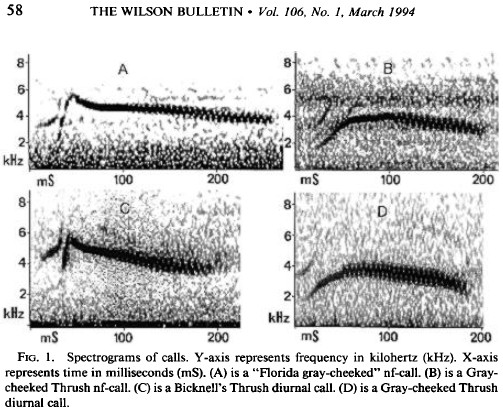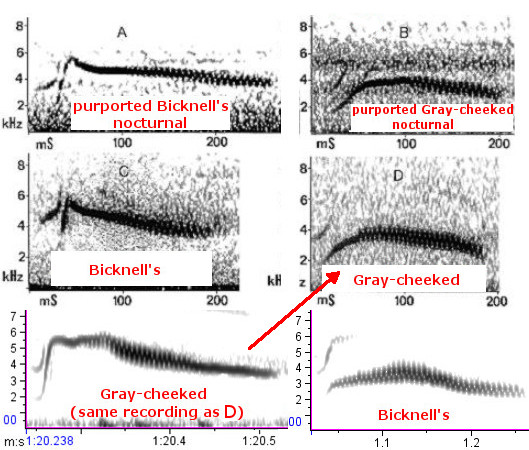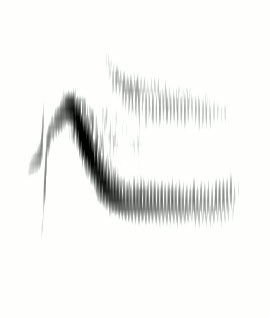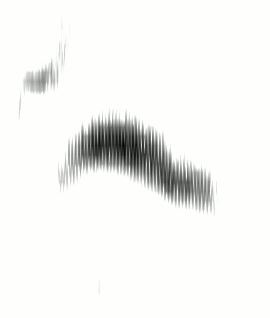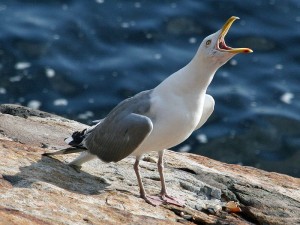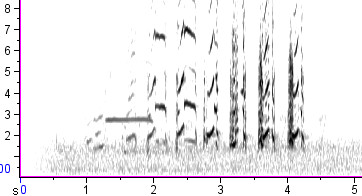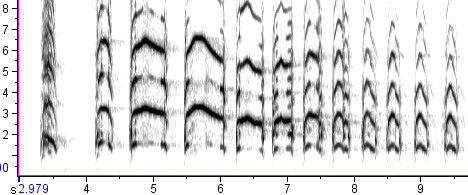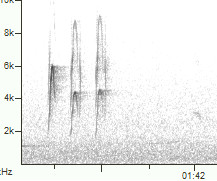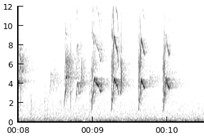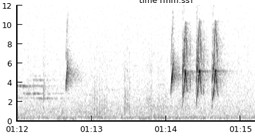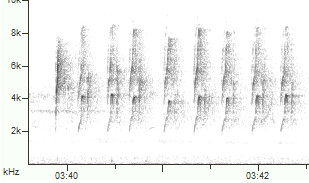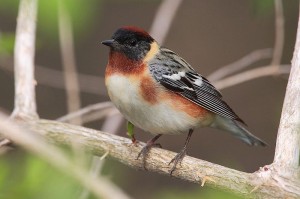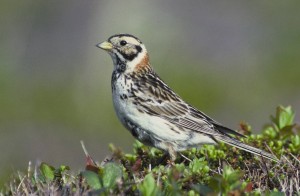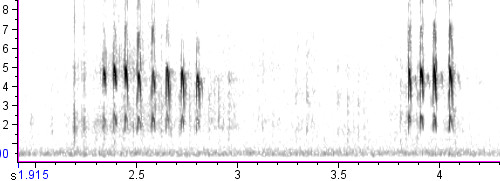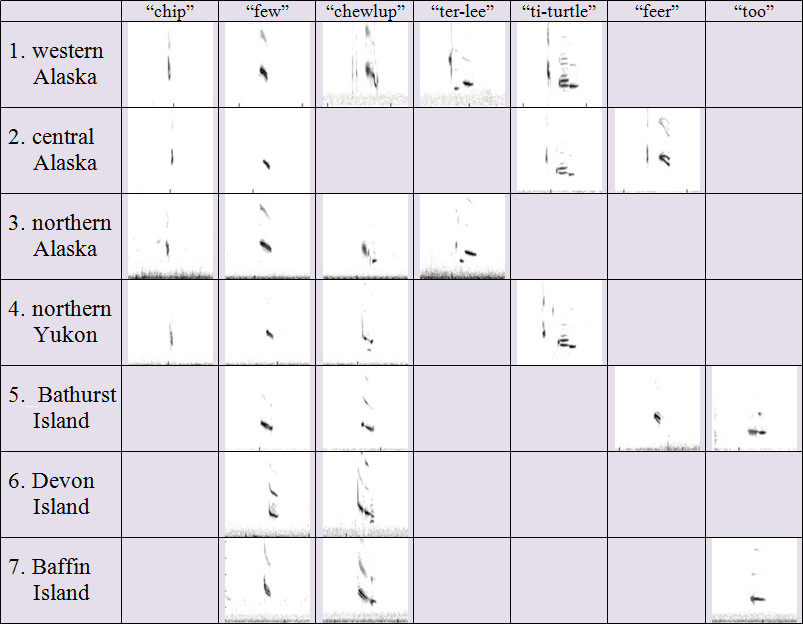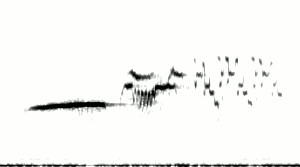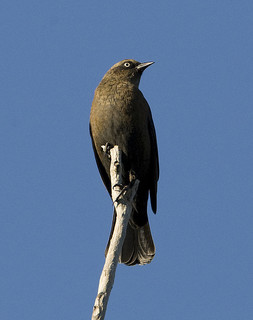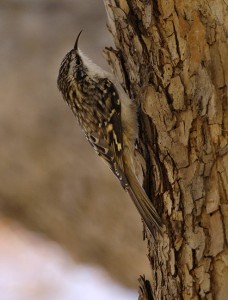Do Bushtits Sing?
(Guest post by Ted Floyd, editor of Birding magazine and bird sound enthusiast)
Fish swim, snakes slither, songbirds sing. Okay, some songbirds’ songs aren’t especially songful: The “song” of the Cactus Wren sounds like an old car starting up, for example, and the “song” of the Yellow-headed Blackbird sounds like someone being strangulated. Nevertheless, the chugging of the wren and the tormented gasping of the blackbird qualify as song, pretty much any ornithologist will tell you.
But some songbirds actually are believed not to sing. Probably the best known example in the U.S. is the Cedar Waxwing. Oh, they’re plenty noisy, flocks of them trilling and lisping and wheezing their way from tree to tree. But they don’t actually sing, it is said. I can see why. I mean, they’re so over-the-top gorgeous, with their waxy wingtips, wispy crests, and just general, well, gorgeousness. One look at a Cedar Waxwing, and it’s love at first sight—whether you’re a human or a waxwing. No need for song.
Less well known is that Bushtits are said not to sing. Like waxwings, Bushtits roam about in noisy flocks. But they’re drab, they’re tiny, they’re not as widespread in the U.S. as Cedar Waxwings, and much of their range comprises hot, arid, rocky, low-diversity shrublands eschewed by many birders. Out of sight (and out of earshot), out of mind.
—–
Of late, I’ve had occasion to question the conventional wisdom that Bushtits do not sing. Here’s the deal: In just the past couple years, Bushtits have invaded my suburban neighborhood near Denver, Colorado. Suddenly, Bushtits are everywhere. There’s a certain novelty for me about seeing and hearing Bushtits. I find myself paying special attention to Bushtits.
In particular, I’ve noticed that one Bushtit vocalization—a short, high-pitched trill—tends to be given by solitary birds or by birds in pairs. Yes, this vocalization can be heard from birds in large flocks and at any time of the year; in the same way, the Red-winged Blackbird’s classic song may be heard in huge roosts on the wintering grounds. I can see from my field notes, as well as from my comments posted to Xeno-Canto, that I’ve been wondering for a while if this short, high-pitched trill functions as the song of the supposedly songless Bushtit. And I had an experience the other day that really got me thinking.
—–
Friday, March 6, 2015, was the first sort-of warm day we’d had around here in a while. Even through my closed window, I could hear House Finches singing their twangy warbles and collared-doves chanting “eighteen” in Greek. (Every wondered why they’re called decaocto?) I could also hear the trilling of a Bushtit, so I went outside to investigate. A Bushtit was teed up on a branch in my yard, vocalizing away. I went back into the house, got my recorder, and came back outside again. The bird was still at the same perch and still vocalizing, and I recorded it. Then I did something absurd.
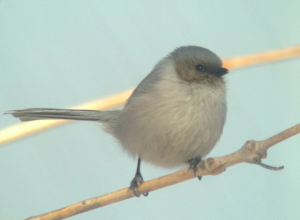
I went back inside, looked for my scope, and looked for my cell phone. I found them, gathered them up, and went back outside. The Bushtit was still there, still vocalizing. I set up the scope, fired up the phone, fiddled with various settings, and got a bunch of photos. That’s absurd! Bushtits aren’t supposed to stay put for ten minutes, as this bird did. They’re not supposed to stay put for ten milliseconds.
But this guy (confirmed as a male by the digiscoped images) was at his perch, teed up, constantly giving the same vocalization. And when I reviewed the soundfiles, I saw something I hadn’t consciously noted while with the bird in real life: Another Bushtit, quite some distance away, was counter-vocalizing with the bird in my yard.
So we’ve got a bird perched for ten-plus minutes, delivering the same vocalization over and over again; the bird’s a male; it’s a sunny and sort-of warm morning in early spring; and another bird is dueting with it. If these were cardinals or chickadees, we’d unquestioningly say they were singing.
But were the Bushtits “really” singing?
The literature says Bushtits don’t sing. I checked Sarah A. Sloane’s BNA account [subscription required], which states: “There is no song in the usual sense. The closest Bushtits get to a song is the somewhat musical, but apparently unstructured, ‘twitterings’ given by many individuals simultaneously when in a close group.” The sprawling account by Arthur Cleveland Bent doesn’t treat song, best I can tell. And a detailed 1903 treatise by Joseph Grinnell likewise contains no mention of song.
Were the Bushtits “really” singing? I think we need first to address another question: What is birdsong? Immediately, I’m reminded of the famous quip by U.S. Supreme Court justice Potter Stewart: “I know it when I see it.” (Or, in the case of birdsong, hear it.) That’s good enough for jurisprudence perhaps, but inadequate for biology. David A. Spector took up the matter in a 1994 paper in the Journal of Theoretical Biology: “Definition in Biology: The Case of ‘Bird Song.’ ” The problem is that different authorities have different definitions, many of them intrinsically circular.
—–
I’m a scientist by training, but more a philosopher by temperament. I get it, at a scientific level, that the matter of song in the Bushtit is unresolved. It remains to be proved that the male Bushtit’s short, high trill functions as song. I’ve stated a hypothesis; now someone needs to go out and test it.
But I’m temperamentally a philosopher, I said, and I can’t resist ending on that note. The morning after my encounter with the provisionally singing Bushtits, I came upon a Black-capped Chickadee up on a branch. The bird was vocalizing. So was another chickadee, farther away. I made a quick-and-dirty recording; you can clearly hear one bird and sort of hear the other bird, and they’re inarguably singing—singing one of the best known and most beloved songs of any bird in the U.S.
Weren’t the Bushtits doing the same thing?
